Writing and publishing any book can be a complex process. But what happens when you want to include illustrations and you're not an artist? The Alliance of Independent Authors has an approved partner directory where you can search for trusted partner services like illustrators.
If you're a member and would like to search the directory, log in to allianceindependentauthors.org and navigate to the following menu: SERVICES > SERVICE SEARCH. Today, Karen Ferreira has stepped in to give you the ultimate guide to illustrations in books and explains how and why you should use illustrations in your books.
These weekly advice posts draw on the group wisdom and experience of the advisors and members of the Alliance of Independent Authors (ALLi). Our thanks to all who shared whether through discussions in our member forums or more formally in submission and presentations. For this post, special thanks to Partner member Karen Ferreira, CEO of Get Your Book Illustrations for the comprehensive post and to Karen Inglis, bestselling children's author for her wonderful case study and tips.

Karen Ferreira, CEO of Get Your Book Illustrations
Ultimate Guide to Illustrations in Books: Why You Should Have Illustrations in Your Nonfiction Book
If you’ve never considered illustrations for your nonfiction book, think again!
“Do you mean children’s books?” you may ask. No, I’m talking about adult nonfiction.
Illustrations make the concepts in your book easier to understand and add appeal and interest, making your book more attractive to readers.
Fully illustrated nonfiction picture books have become a trend for kids, but illustrations are just as valuable for adult nonfiction.
The definitions and origin of the word “illustrate” sums up why illustration for nonfiction books is an excellent idea:
- explain or make (something) clear by using examples, charts, pictures, etc.
- serve as an example of.
Origin: early 16th century (in the sense ‘illuminate, shed light on’): from Latin illustrat- ‘lit up’, from the verb illustrare, from in- ‘upon’ + lustrare ‘illuminate’.
If your goal is to deliver the information in your book with clarity and shed light on a certain subject, illustrations are the perfect tool to help you achieve that.
Benefits of using illustrations in a nonfiction book include that they:
- attract attention
- improve reader understanding and recall
- enhance the aesthetic value of your book
- help the reader identify key points
- reduce text (while expounding the message)
- break your text into user-friendly sections
- evoke an emotional response
While an excellent illustration for your cover is also a brilliant investment, in this article we’ll focus on interior illustrations.
Let’s explore the benefits of getting illustrations for nonfiction books and how to work with your illustrator to ensure you get the desired results.
Ultimate Guide to Illustrations in Books: How Illustrations Can Improve Your Book
Attract attention
This is one of the major advantages illustrations bring to any book. A page with an image is more eye-catching than a page with only text. If someone flips through your book (or uses the “look inside” function on Amazon), illustrations will help your book to attract attention.
Adding images to any existing nonfiction book that doesn’t have images will improve it and make it more competitive in the market.
Improve reader understanding and recall
Illustrations clarify the text and improve the reader’s understanding. It’s much easier to understand and recall a concept that’s illustrated.
For instance, describe a few yoga poses to someone in text only. No matter how well you describe it, they’ll understand better if there are visuals showing the poses.
As for the recall, read the complete description of, “Stand with your feet together. Inhale and then exhale as you move your left foot back about 1.2 meters (depending on how tall you are). Turn your left foot, placing it at a 90-degree angle. Raise your arms straight overhead, palms together. Now lower down your body so your right knee is above your right foot, keeping your arms up while breathing. Face upward.”
Now walk away and go execute it…
It’s hard to recall, especially if you’ve never seen this pose before (and if you didn’t cheat by looking at the images below 😉 ).
You have to do an added step of envisioning it, and you may not be sure you’re even getting it right.
How much simpler would just this one image make it?

Credit: workoutlabs
There are endless examples, particularly in subjects dealing with anything physical. Think of manuals, botany, biology, science, crafts, and so on. That said, illustrations can aid abstract subjects just as much to improve understanding and recall.
Some ideas are baffling with no visuals to illustrate them, while others are just well-complemented and easier to understand with a good drawing to show it.
Here are two examples:

Credit: Rod Wallace, PhD, Drowning in Potential Credit: World Book
Illustration by GetYourBookIllustrations
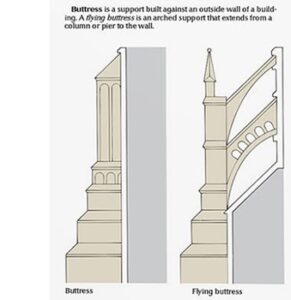
Credit: wordbook
Many nonfiction books contain summarized data, comparisons or statistics. Charts, graphs and tables are perfect to show this clearly and concisely. These are invaluable to sum up information.
For example, if you’re reporting on the level of illiteracy in all African countries, a chart will convey the information infinitely better than text. Strings and strings of text and numbers become impossible to absorb. With a chart, the reader can see and compare the numbers in one glance.
Illustrations can save you and the reader headaches in making your text easy (or possible) to understand and recall.
Ultimate Guide to Illustrations in Books: Enhance the Aesthetic Value of Your Book
Illustrations also add aesthetic value to your text. One striking illustration for your cover can make an immense difference in how well your book sells.
Professional illustrations, even simple ones, make your book interior more pleasing on the eye.
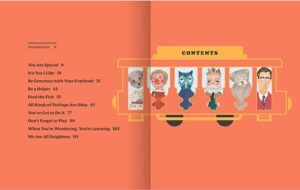
Credit: Melissa Wagner and Fred Rogers Productions. Everything I Need to Know I Learned from Mister Rogers' Neighborhood
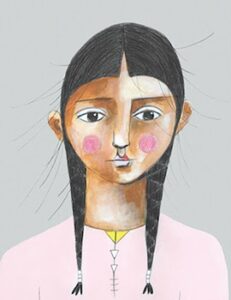
Credit: Lisa Charleyboy and Mary Beth Leatherdale
#Notyourprincess: Voices of Native American Women
Ultimate Guide to Illustrations in Books: Help the Reader Identify Key Points
While you may want your reader to assimilate all the information in your book, that is hardly ever possible. I think most nonfiction authors would agree that if a reader walks away with a firm grasp on the key fundamental concepts, the book is a success.
You’ll naturally choose only the key ideas to depict in the illustrations. Besides increasing the reader’s understanding, this acts as a guide and draws attention to what is most important.
The illustrations are a double-edged sword, enabling you to lead your readers along the road map you choose, while accentuating the landmarks to them.
For instance, this illustration draws attention to a fact parents who want to get their child into an American Ivy League should be well aware of: Only one in 5000 high school freshmen are admitted. As only one sentence within your text, the reader could easily miss this, but the illustration drives it home.
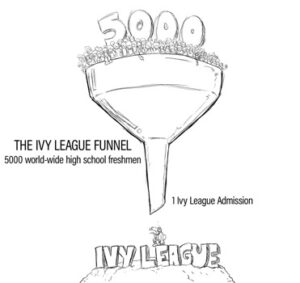
Credit: Dr. J Roark, Lion Dad
Illustration by GetYourBookIllustrations
Ultimate Guide to Illustrations in Books: Reduce Text
An illustration can provide a visual shorthand and impart a wealth of information. Thus, a single drawing, table, chart or graph can replace many words in your text.
Whatever the content of your book is, illustrations can help to reduce its length.
Visuals can convey certain ideas that text can’t. Some concepts are very hard to understand in written format and are better shown in an illustration.
This can keep up interest and reduce lengthy descriptions. While some people still enjoy a long read, many readers prefer shorter texts.
Tip: In your manuscript, identify where you can replace or shorten the writing with an illustration. The wonderful thing is, instead of the replaced text lessening the info you’re conveying, you can still impart the same or more.
Here is a good example of an illustration simply communicating a concept, replacing the need for a lengthy explanation:

Credit: Rod Wallace, PhD, Drowning in Potential
Illustration by GetYourBookIllustrations
Ultimate Guide to Illustrations in Books: Break up the Text
Lengthy passages can become hard to read and lose the reader’s attention. Good formatting can help, but it’s limited.
You can use illustrations to break long passages and make your book more appealing. This makes the reader feel they’re reading from milestone to milestone (more so than just chapter headings), making for happier readers and less monotony!
Ultimate Guide to Illustrations in Books: Evoke an Emotional Response
The secret of any great story is that it evokes an emotional response. Without that, who cares what happens?
You may think this doesn’t apply to nonfiction, but eliciting an emotional response in your nonfiction reader has plenty of advantages.
Readers will be more likely to read the entire book, enjoy it more and learn and remember information better if there is emotion involved. Plus they’ll be more likely to recommend the book to others.
For many nonfiction books it’s easy to see that you want the reader to experience emotion, for instance, self-help or self-improvement books across the boards, like “Overcome anxiety”, “How to stop being broke” or “How to get the girl of your dreams”.
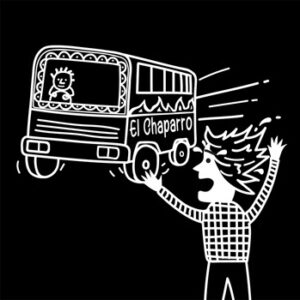
Credit: Kerry Baker, The Mexico Solution Illustration by GetYourBookIllustrations
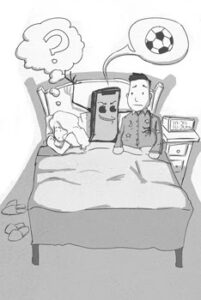
Credit: Rod Wallace, PhD, Drowning in Potential
IIllustration by GetYourBookIllustrations
Even for most business books, biographies and autobiographies, travel guides and humour and commentary books, it’s easy to see the value (and necessity) to get an emotional reaction from the reader.
I’d agree that some nonfiction books don’t have to achieve this, like a manual on car engines. That said, imagine a car manual or a math textbook that can make you laugh as you learn, or an entertaining history book that takes you along on the emotional highs and lows of our forefathers.
I’m sure learners of all ages would retain the information in these books much better than their dry counterparts!
Any well-planned illustration will evoke an emotional response. It can be humour, indignation, joy…it doesn’t matter, as long as the reader feels something. Your book will be better as a result.
Ultimate Guide to Illustrations in Books: Choosing an Illustration Style
With the variety of illustration styles available, it can be challenging to know which one is best to use. So how do you choose?
While nonfiction illustrations should be functional, it’s an excellent idea to use them to add a unique spin to your book and make it stand out among its peers.
We can achieve this in various ways, including humour, aesthetics, or using one central character to tell an interesting story with your illustrations throughout your book.
As with any branding, illustration focuses on capturing the attention and interest of the reader.
In selecting the illustration style to use, ask yourself several questions:
- What is the message of your book?
- What is the tone of your book? What tone would you like the illustrations to give the book?
- Which illustrations will best complement your book? Only graphs and charts, or full scenes or character illustrations?
- Who is your targeted audience? Which styles will they identify with?
While there can’t be a complete disconnect between your writing style and topic and your illustrations, you can somewhat change the tone of your book with illustrations. If the tone of your book is serious or dry, you can lighten it with illustrations.
Here are the most common styles of illustrations for nonfiction:
Editorial/Cartoon style

Credit: Rod Wallace, PhD, Drowning in Potential
Illustrations by GetYourBookIllustrations
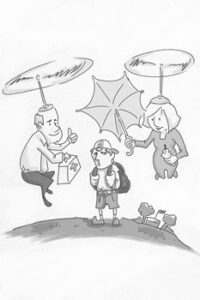
One of the best illustration styles for nonfiction is editorial, or cartoon. People are already used to this style with nonfiction writing, due to its use in newspapers.
Cartoons make people smile and can lighten even the most serious message, while still driving it home. They connect with a wide variety of people.
These illustrations often transcend categories of age, ethnicity, and gender.
Besides being attractive, they also communicate the message of the text visually, often enhancing or clarifying it.
Realistic Style
Another popular style is realistic illustrations. These can vary from photo-realistic to roughly realistic.
For some subjects, such as biological and scientific, this style is usually required to depict accurately what is being described.

Credit: Katie Scott, Botanicum, Illustration by GetYourBookIllustrations
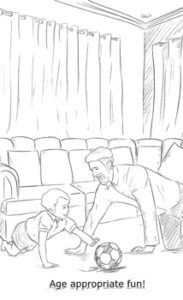
Credit: Dr. J. Roark, Lion Dad Illustration by GetYourBookIllustrations
Black and White
Nonfiction illustrations are often grey-scale or black and white. This is easier to produce and cost-effective for printing.

Credit: Kerry Baker, The Mexico Solution Illustrations by GetYourBookIllustrations
There are other styles, and you can choose whichever one you prefer.
In choosing a style for your book, the primary task is not to select the prettiest style, but the style that will communicate your thoughts to your audiences in the best way.
That said, it’s not only the style that will achieve that but also the ability of your illustrator to capture the message.
Let’s explore how to find the right illustrator.
Ultimate Guide to Illustrations in Books: How to Find the Right Illustrator
It can be a challenge to find a professional, experienced illustrator. Being talented at drawing is not enough. As mentioned, the illustrator’s ability to convey your message is crucial.
You need an illustrator who can:
- draw well
- understand you and your message perfectly
- translate your message into illustrations
- do all the above with great and timeous service and communication
Since most illustrators are self-employed, there’s a definite risk of hiring an illustrator who can’t give you the quality of service or artwork you want. My emphasis would be on service. Their portfolio shows the quality of their art, so that’s straightforward. Service is harder to predict.
Most authors search for an illustrator whose illustrations they like, and that’s all. Unfortunately, that can lead to a nightmare experience. I can tell you many (first- and second-hand) stories of illustrators disappearing, postponing, being rude, etc. There are also those who want to please, but just can’t understand what you need.
Thus, it is crucial to do due diligence to make sure you hire someone who will deliver.
You can achieve that by doing a few things.
First, make sure they have excellent reviews or testimonials and a strong portfolio.
If they look promising, chat to them online or on the phone. Make sure they understand you, answer your questions and respond promptly. Make sure you get along well and you think you’ll work well together.
Never hire someone you haven’t communicated with first. Their portfolio may look great, but it doesn’t mean their service is good.

Chat to them before hiring them!
Illustrations by GetYourBookIllustrations
If there are any red lights that you can’t straighten out easily, I strongly advise finding someone else to work with. Poor communication, them not understanding you so well, slow response time, or anything that just feels off, is likely to get magnified when you work together.
My advice would be to put the emphasis on communication and promptness.
Here’s why: There are many talented illustrators. I can guarantee you there are tens, if not hundreds, of illustrators who can do drawings you’ll love the style of. Again, it goes back to service.
The most beautiful illustrations won’t help you if they’re not conveying what you need or want, if they take two years to complete, or if they never get done.
Also, you may end up with illustrations you’re happy with, but if the journey with the illustrator to get them was frustrating, it spoils a large part of your experience with your book. Getting illustrations should be fun and exciting, not painful!
Don’t hope for the best and think it will somehow work out. Hire someone who inspires confidence from the start. There are enough options for you to find a great fit that you are thrilled with!
Here are some ways to find an illustrator:
Illustration Company
 There are companies, like GetYourBookIllustrations, that sell book illustration services. In these companies, you are likely to get professional artists, familiar with book illustration.
There are companies, like GetYourBookIllustrations, that sell book illustration services. In these companies, you are likely to get professional artists, familiar with book illustration.
Again, check their testimonials and portfolio and chat to them to make sure it’s a good fit.
Freelancer
There are many great freelancers, but there is a risk in working with a freelancer. Stories of freelance illustrators disappearing or not delivering is quite common. So make sure to follow the advice above.
Sites like Upwork can keep your deposit in escrow, so you don’t lose the money if the freelancer doesn’t deliver.
Also make sure they have experience in illustrating books. Many illustrators are very talented but have never illustrated for books. (They may illustrate banners, posters, etc., not books.) In that case, you will need to know all the requirements for illustrations for ebooks and print and guide them.
Other ways to find an illustrator
Word of mouth: Know anyone who’s written a book with illustrations you like? Ask if they had a great experience with their illustrator.
Writer communities or groups, whether local or online, can also be a suitable place to ask.
If you admire illustrations in a specific book, you can find the illustrator’s name and contact him or her. This way you know you are dealing with a professional book illustrator whose work you love. It’s best to look at books in your niche for this.
Also still chat to them to make sure they understand you well, reply promptly and you get along.
Social media: Many illustrators market their services on social media like Facebook, Instagram and Twitter. You can search these sites for “illustrator” to find them.
You can also search for book illustrators’ websites. Many professional illustrators have websites where they display their work. By checking out the illustrator's website you can also learn more about them and how they present themselves before chatting to them.
Ultimate Guide to Illustrations in Books: How to Work with Your Illustrator
Once you’ve chosen a professional illustrator for your book, you need to provide them with the right information to get the artwork you desire. Otherwise, you might get illustrations that don’t communicate the message you intended.
Thus, it is important to know how to work with your illustrator to ensure you get the desired result.
Some useful tips for how to work with your illustrator:
- Most times, the illustrator will not read the entire book, so giving them a copy may not be helpful. If you know which parts you want illustrated, provide the text of those parts. If you don’t know, you can provide a summary and work with your illustrator to see which parts would be interesting to illustrate.
- Illustration notes often work best. An illustration note is a brief description of what you need in the illustration. This can be as simple as “A man and woman arguing” or more elaborate when several elements or details are important.
- Compile data for your illustrator concisely and accurately. This is more applicable when your text is based on research or a report on some collected data. It will be helpful if you summarize and simplify your data before presenting them to your illustrator.
- Don't leave it to the illustrator to do the mean, mode or median calculations for you. Otherwise, you might end up getting something different from what you expected (and it’s not their job).
- Many professional illustrators can also advise you on the best sizes of illustrations for your book help and you to develop the best layout.
- Once you have signed a contract and paid a deposit, your illustrator will start. Many illustrators will ask for progress payments and the last payment with/before delivery of your final high-resolution illustrations.
- Before doing final, full colour illustrations, the illustrator will do sketches. Ensure you see and give feedback on the sketches to ensure that your illustrator is on track.
- It’s important to allow your illustrator creative freedom, but to point out areas where you’d like correction or improvement. Edits are a very normal part of the process. The earlier you point out needed changes, the better, as it’s much easier to correct a sketch than a full colour illustration.
- For nonfiction you often need to check that the illustration is factually correct. You may need to work with an expert on this step. Do this on the sketch step too, before the illustrator moves onto colour.
- For creative illustrations, if the illustrator delivers something different to what you had envisioned, it’s often better not to immediately ask for edits. Rather examine or “sit with” the illustration for some hours or a day. It’s possible the illustrator has created something better than your initial vision. If, after some time, you’re still not satisfied with the illustration, request edits.
- Listen to your illustrator's suggestions. As a pro, they should have suggestions that can improve your illustration. They can do more than just draw your exact ideas, they can be a professional collaborator.
- On the other hand, the illustrator shouldn’t be inflexible and unwilling to listen to your suggestions. If you act as partners and work together, you can create the best result.
- Clear communication is vital to get the desired result. Most illustrators want to create illustrations that you love, but can only do that with good communication. I’ve worked with authors who expect me to read their mind. As much as I imagine most illustrators would love that ability, alas, we are not mind-readers. For nonfiction, details can be important. Convey those details to the illustrator. References can also be invaluable.
If you follow these guidelines in working with your illustrator, you should have a smooth experience.
In Closing
Now you know why you should have illustrations in your book and how to go about getting them! I hope this is helpful in making your book the best it can be. I’m always happy to chat to authors, so feel free to reach out to me at [email protected] with any comments or questions you may have.
Ultimate Guide to Illustrations in Books: Case Study Karen Inglis

Karen Inglis, children's author and ALLi Advisor on self-publishing books for children
Find out more about Karen on her website and blog.
How did you get your book illustrations? Did you do them yourself or work with a company?
“I would never recommend trying to illustrate your own book unless you are lucky enough to be formally trained or extremely gifted! I found my illustrator for all but my most recent picture book through Upworks (formerly Elance.com). A close and talented illustrator friend did the pen and ink drawings for The Christmas Tree Wish, my latest picture book, and we are currently working on a new book together.
Here are some places to look for illustrators:
Getyourbookillustrations.com, SCBWI.org (The Society for Children’s Book Writers and Illustrators), Fiverr.com, ChildrensIllustrators.com, Upworks.com, Behance.net, 99designs, Guru.com.”
Tips for your search
“Look for someone whose style you like and which fits with what you can see is popular with your target age group/genre. ‘Different’ is fine too – but it will need to stand out as both brilliant and appropriate for your target audience, and that can be very subjective!
When comparing illustrators that you like on the freelance sites, look beyond cost and overall satisfaction rates for the quality of the design. Consider ratings and feedback on timing, reliability, ease of contact and how easy they are to work with. It’s also worth looking at repeat hire rate and project completion rate to get a sense of their track record.”
Facebook and Linked-In
“Also, don’t forget LinkedIn or Facebook – just search for ‘children’s books illustrators’ or ‘picture book illustrators’ groups and you’ll find more options.
It’s also worth asking around in Facebook children’s author groups you belong to for personal recommendations. And/or keep a note of replies when someone else asks for recommendations, especially if the illustrator they recommend (or who replies) is one whose style you like. Even if you don’t need an illustrator right now, you may find these recommendations useful to come back to for a future project. I save any such posts to a private Facebook collection named ‘Illustrators’.”
Did you make any mistakes along the way? If not, do you have any advice for writers wanting to have illustrations?
“I avoided costly mistakes through careful planning! The key point with illustrations for a picture book is not to brief the illustrator until you are sure the story is working – and not before you have mapped it out across the interior pages of the book. This means testing the story text with your target audience (parents, teachers, librarians who are familiar with what will engage little ones) – then, once you are sure it is working – mapping it out first on a storyboard and then in a physical mock-up, to enable you to experience the page turns and visualise likely images in situ.
With my first picture book Ferdinand Fox’s Big Sleep I had a reasonably clear idea of which pictures would go with which text as they had always played naturally in my head, but when I came to do the storyboard I had to cut planned pictures in some places (no room) and include new images in other places (to avoid a text-only page). Similarly with my most recent picture book The Christmas Tree Wish, it was only at the layout stage that it became clear which pictures would work and where and these were often very different to what I had imagined.
And it’s not just about the picture content – it’s often always about ensuring variety of size or format to keep the visual interest up. This only becomes apparent at the storyboarding and dummy mock up phase. To fail to plan is to plan to fail is the key phrase to keep in mind here! The last thing you want is to pay for a bunch of illustrations you can’t use!
With chapter books – where you have black and white illustrations – you may have a clear idea in your head of where these will go but, again, when you look at the print layout file and come to drop them in (I use Vellum for this by the way) you often find you need to shift the placement in order to avoid an odd page flow.
My final piece of advice would be to outsource your layout to a professional for picture books unless you are going for a very simple design of text on one page and an image on the opposite page.”
Any thing else that would help those keen to work with illustrators?
“What I would say is be sure to work with an illustrator who has a track record in your genre and who is experienced and understands the technical requirements for print books such as 300dpi for colour images and 200dpi for black and white. Also be sure to let them know the page size of your book so they can create the image to an appropriate scale. If they make it too small for the page it will go fuzzy if you try to enlarge it. And if they make it way too large, important detail could be lost if it needs to be reduced. But, really, if you’re using a professional they will know all of this.
I would try to agree a fixed price for your images on a ‘work for hire basis’, which means you own the copyright. However, some illustrators may not wish to work this way and in this case you need to respect this. I talk in more detail about this and much more in ‘How to Self-publish and Market a Children’s Book’.”
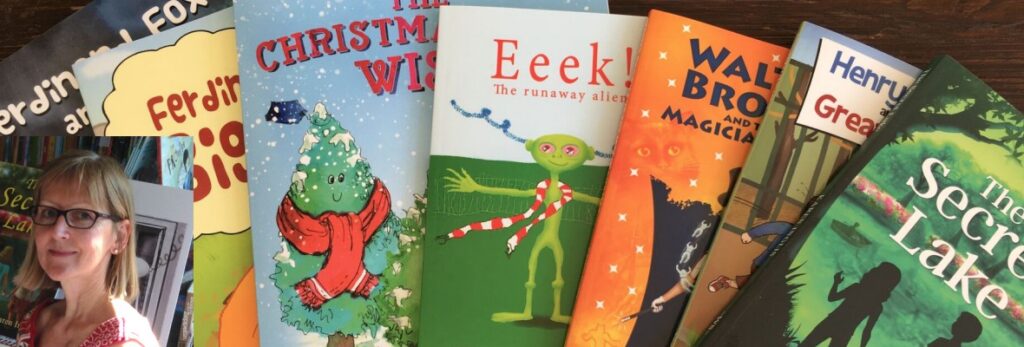

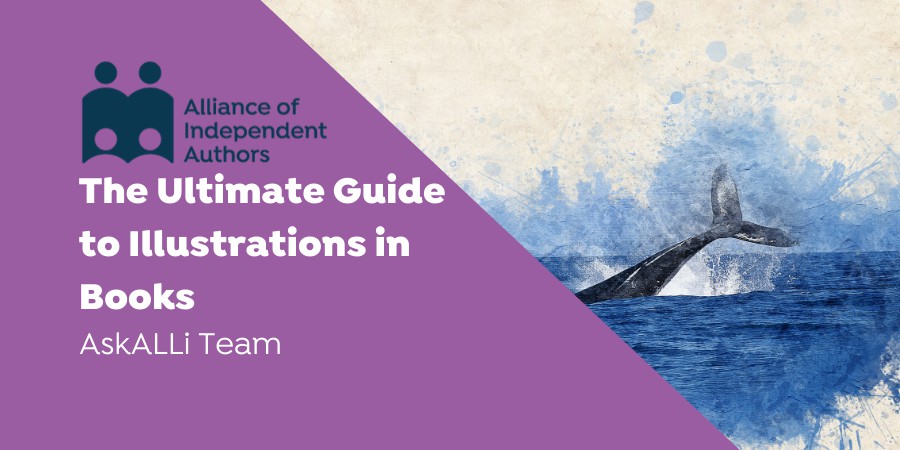

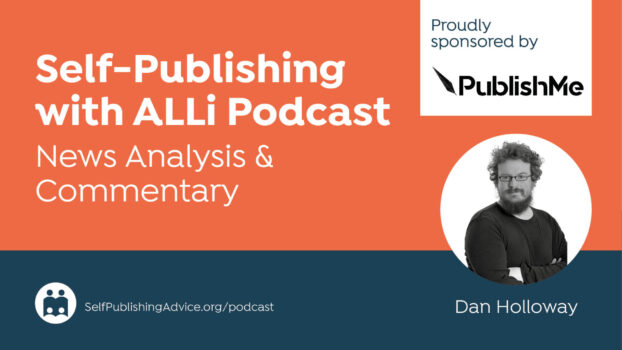
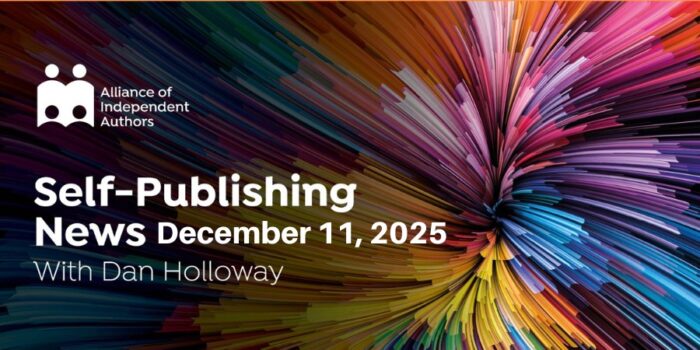
A couple years ago, I found an article that showed what pages in a traditionally published book were best to put art on to minimize publishing costs by having all the art print on “one side” of the paper. I have notes on some draft pages of the book on which I’m currently working that tell me whether the page is good for art, but can’t be sure those notes are complete Would you happen to have that information about where to put the art so it all prints on the same side of the rolled paper? (New computer nightmare: files had to be moved and brought into a new document format. ) I’m working on a nonfiction book about nursing home visiting that sounds a bit like what Tom Broussard did with his ABCs of Aphasia, but in “small square” format rather than the 8.5 x 8.5-inch format he used.
This is a very helpful guide! I don’t consider myself an illustrator. I consider myself a visual artist. I compose the story with pictures – I don’t illustrate the story with the photos.
You can also check out my blog on Tips on Becoming a Great Illustrator
Hope this will help you too.
Thanks
Gabriella
Any guidelines for a contract between artist and writer for a children’s book. My artist is requesting that she retains ownership of the artwork and sketches, that I pay 25% to use the artwork for the first 20,000 copies. I would then pay 10% royalties or the original cost of the artwork for an additional 20,000 copies. Thanks!
Hi Anne, sorry, I only saw your comment now. I would always recommend work for hire, as Alex said, if the illustrator is at all willing to go that way. At GetYourBookIllustrations we always work that way when we do illustrations for authors. While I believe the illustrations are a big part of a book’s potential success, the author is the one who puts in all the work on promotion, so I think it’s fair for the author to reap the rewards of their success.
“I would try to agree a fixed price for your images on a ‘work for hire basis’, which means you own the copyright. However, some illustrators may not wish to work this way”
This is called a “rights grab” and professional illustrators rarely allow it unless they are significantly ($$$$) compensated.
It’s not usually necessary to own the work (copyright) and I would recommend making sure the LICENCE that you obtain covers all the uses you envision for the work, with the ability to pay for further usage if required. So you might get an exclusive licence for book use (so no other authors can use the illustrations) and then the right to use the illustrations to promote your book. But if you are going to put the images all over merchandise, the illustrator should be compensated further.
Thank you!
Hi Sacha,
I am so exciting that I have found your website/blog! My design editor sent me this link from you. My work is about stroke and aphasia (when you lose your language). My first three books were regular reading books for people with an interest in stroke and aphasia. But I just did my fourth book, The ABCs of Aphasia, and it looks like a children’s book (although it is non-fiction), 8.5″ x 8.5″, and full of great, vibrant pictures and colorful text. I really wanted to do The ABCs of Aphasia with a great illustrator but there was no time to figure that out.. but now I am working on a series of similarly small (non-fiction) books and would love to find the right kind of illustrator who is capably of producing the illustrations but joined at the hip with the language behind it (or above it, next to it, etc.) with a theme that flows from one page (and one thought) to another…what do you think? Thanks! Tom Broussard, [email protected]
Hi Thomas, congratulations. That sounds like a great project. The best thing we can do is invite you to join ALLi and then we can connect you with one of our approved Partner member illustrators. http://www.allianceindependentauthors.org/join
Hi Tom, sorry, I’m only seeing these comments now. Your work sounds extremely interesting. If you’re still in need of help I am really more than happy to jump on a call with you (of course obligation free) and help you figure out which illustrator path would be best for you. [email protected]